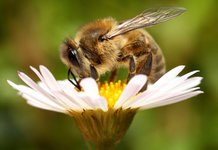
Beekeeping is a fascinating, useful and quite profitable activity.

Well, like any hobby (and for some, beekeeping is a job), it involves the presence of certain equipment, without which it would be impossible to do this business.
Ancillary equipment for performing a certain job has been greatly improved in most professions over the past 100 years. Drawings have not been drawn on a kulman for a long time, for this they use modern programs such as AutoCAD, and current accountants have not counted on accounts and calculators for a long time, for this there are convenient programs like 1C.
1. Beekeeper costume and mask

In beekeeping, in this regard, everything is a little sadder. For example, a beekeeping mask (often comes with a suit), as it was invented 100 years ago, has not changed at all during this time. Unless the material from which it is made has changed.
Costumes should always be in light colors, most often it is white, slightly less often blue and yellow.
A beekeeping costume is never made of black and gray and the explanation for this is very simple. In the wild, and most of the life of the bees in it existed, there were always those who wanted to enjoy gratuitous honey, these were bears, martens, and other predators.
Bees genetically believe that a dark color is a sign of danger. Therefore, you will never meet a beekeeper with long hair, very unshaven, and in a black suit.
For bees, such a “creature” will be associated with a bear, aggression will begin literally right away and working with bees will be simply impossible.
For the same reason, sharp smells should not come from the beekeeper; they cannot tolerate the smell of sweat, perfume, alcohol, tobacco, etc.
2. Smoke

In addition to the suit, the beekeeper must have a smoker in the arsenal, although the design of the smoker has undergone some changes over the past 100 years, however, the principle of operation has remained the same.
Bees do not scare, they associate it with a forest fire, they run away from smoke in order to collect honey in their goiters and prepare to leave the hive.
3. Beekeeping Chisel

There is a third very important subject, which a beekeeper cannot do without. it beekeeping chisel, which you guessed it, has also not changed much over the last hundred years. It helps the beekeeper extract frames from the hive.
4. Other inventory

Of course, this is not a complete list of the tools that the beekeeper uses in his work. There are also carrying boxes, markers for marking the uterus, transfer boxes, all kinds of Ganiman and propolis lattices, of course a honey extractor and so on and so forth.
But all this happened 100 years ago!

Summarize:
When I started writing this article, and said that progress was reflected in almost any profession, I could not find a single example where this same progress helped the modern beekeeper.
Of course, today's beekeepers have not painted hives with linseed oil for a long time, but use paints that were not a century ago.They also use more modern and lighter materials, such as PPU and PPS sandwich panels, to make these hives.
But the principle of the hive itself has not changed, they only become lighter in weight and easier to manufacture. But for bees, this is the same hive in which they were populated 100 years ago.
I would very much hope that our grandchildren, the beekeepers, looking back, will think how hard it was for our grandfathers, without the modern technologies that exist in 2050.
Do you like the article? Write in the comments what is interesting from the life of the beekeeper, I will try to answer all questions.


























